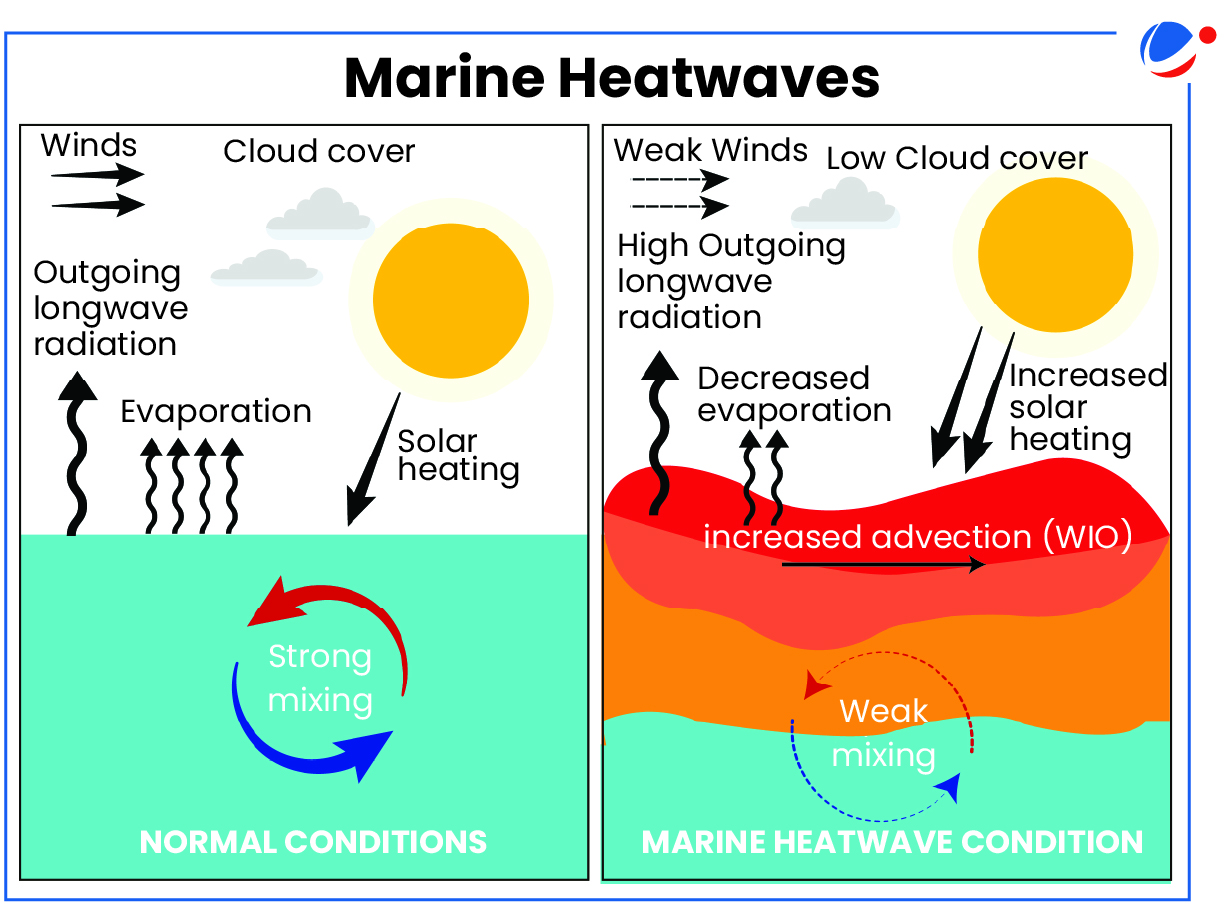How marine heatwaves are reshaping ocean ecosystems – Oceanographic Magazine

Report on Marine Heatwave Impacts and Alignment with Sustainable Development Goals
Executive Summary
Recent research synthesising 331 studies and reports provides a comprehensive analysis of the 2014-2016 Pacific marine heatwave. The findings document unprecedented ecological disruption, offering a stark preview of future ocean conditions under continued climate change. These events pose a direct and severe threat to the achievement of multiple Sustainable Development Goals (SDGs), most notably SDG 14 (Life Below Water) and SDG 13 (Climate Action), by degrading marine ecosystems, threatening biodiversity, and jeopardizing the services they provide to humanity.
Analysis of the 2014-2016 Pacific Marine Heatwave
A review conducted by the University of Victoria’s Baum Lab examined the longest recorded marine heatwave, which affected thousands of kilometres of the North American west coast. Key characteristics of this event include:
- Duration: 2014 to 2016
- Location: Pacific Coast of North America
- Intensity: Ocean temperatures reached two to six degrees Celsius above historical averages for a prolonged period.
- Impact Scale: Described as an “unprecedented ecological disturbance.”
Documented Ecological Consequences and Threats to SDG 14
The heatwave’s impacts directly undermine the objectives of SDG 14 (Life Below Water) by causing widespread damage to marine biodiversity and ecosystems. The primary consequences observed were:
- Massive Species Displacement: Approximately 240 species were observed outside their typical geographic ranges. For example, the northern right whale dolphin and the sea slug Placida cremoniana were found over 1,000 kilometres north of their established habitats. This disrupts ecosystem balance, challenging Target 14.2 to protect and restore marine ecosystems.
- Habitat Collapse: The event triggered widespread decline of foundational species, including kelp and seagrass, leading to the collapse of entire kelp forest ecosystems. This loss of critical habitat directly contravenes the goals of marine conservation.
- Unprecedented Mortality Events: Mass die-offs occurred across the food web, affecting species from sea stars to seabirds. Unusual mortality events were also documented in several marine mammal populations, highlighting a severe loss of biodiversity.
- Extreme Extinction Risk: The keystone rocky shore predator, the sunflower sea star (Pycnopodia helianthoides), was driven to near-extinction, demonstrating the vulnerability of critical species to thermal stress.
Cascading Systemic Impacts and Broader SDG Implications
The direct impacts of the heatwave initiated complex, cascading effects throughout the marine environment, with significant implications for a range of Sustainable Development Goals.
- Ecosystem Destabilisation (SDG 14 & SDG 15):
- Temperature-linked diseases, such as sea star wasting disease, accelerated ecosystem collapse.
- The mass mortality of seabirds illustrates the interconnectedness of marine and terrestrial systems, impacting biodiversity goals under both SDG 14 and SDG 15 (Life on Land).
- Food Web and Productivity Disruption (SDG 2 & SDG 14):
- The abundance and nutritional quality of forage fish were significantly reduced, creating food shortages for predator species, including whales.
- Plankton communities, the base of the marine food web, were fundamentally reorganised, and overall offshore oceanographic productivity was altered.
- These disruptions threaten fisheries, which are critical for global food security (SDG 2: Zero Hunger) and the sustainable management of marine resources (Target 14.4).
- A Call for Climate Action (SDG 13):
- The marine heatwave serves as a clear and powerful manifestation of climate change. Its devastating ecological effects underscore the urgent need for global action to combat climate change and its impacts, as mandated by SDG 13 (Climate Action), to protect all life below water.
1. Which SDGs are addressed or connected to the issues highlighted in the article?
-
SDG 14: Life Below Water
- The article’s central theme is the devastating impact of a marine heatwave on ocean ecosystems. It directly discusses the health of marine life, the collapse of habitats like kelp forests, mass mortality of species, and the overall disruption of marine biodiversity, which are core concerns of SDG 14.
-
SDG 13: Climate Action
- The article identifies the marine heatwave as a “stark preview into the future of ocean warming.” This links the ecological disaster directly to the broader issue of climate change. The event itself is a climate-related hazard, and understanding its impact is crucial for climate action, adaptation, and impact reduction, which are central to SDG 13.
2. What specific targets under those SDGs can be identified based on the article’s content?
-
Target 14.2: By 2020, sustainably manage and protect marine and coastal ecosystems to avoid significant adverse impacts, including by strengthening their resilience, and take action for their restoration in order to achieve healthy and productive oceans.
- The article provides a clear example of the failure to meet this target. It describes “unprecedented ecological disturbance,” the collapse of kelp forests, and widespread death of marine life. These are the “significant adverse impacts” the target aims to prevent. The ecosystem’s inability to cope with the heatwave highlights a lack of resilience.
-
Target 14.a: Increase scientific knowledge, develop research capacity and transfer marine technology… in order to improve ocean health and to enhance the contribution of marine biodiversity to the development of developing countries…
- The article is based on research from the University of Victoria, which reviewed “331 primary studies and governmental reports” to gain “a better understanding of the ecological impacts of marine heatwaves.” This directly reflects the activity of increasing scientific knowledge to understand and ultimately improve ocean health.
-
Target 13.1: Strengthen resilience and adaptive capacity to climate-related hazards and natural disasters in all countries.
- The marine heatwave is a “climate-related hazard.” The article details the catastrophic effects on the ecosystem, such as the near-extinction of the sea star *Pycnopodia helianthoides* and the reorganization of plankton communities, demonstrating a severe lack of resilience and adaptive capacity in the face of this hazard.
3. Are there any indicators mentioned or implied in the article that can be used to measure progress towards the identified targets?
-
Indicator for Target 14.2: Changes in the health and extent of marine ecosystems.
- The article provides specific metrics of ecosystem damage. It states there was “widespread kelp and seagrass decline and many kelp forests collapsed.” The health of these habitats is a direct indicator of progress (or lack thereof) toward protecting marine ecosystems.
-
Indicator for Target 14.2: Changes in the conservation status of species.
- The article notes that the sea star *Pycnopodia helianthoides* “came close to extinction” and that “unusual mortality events were observed in several species of marine mammal.” Tracking the population status and mortality rates of key species serves as a critical indicator of ecosystem health.
-
Indicator for Target 13.1: Changes in species’ geographic range due to climate stress.
- The article explicitly states that “around 240 different species were found outside of their typical geographic range,” with some moving “over 1,000 kilometres north.” This geographic shift is a measurable indicator of the impact of climate-related hazards on biodiversity and ecosystem structure.
-
Indicator for Target 14.a: Volume of scientific research on ocean health.
- The research itself, which synthesized “331 primary studies and governmental reports,” is an indicator of the scientific community’s effort to increase knowledge about ocean health and the impacts of climate change.
4. Table of SDGs, Targets, and Indicators
| SDGs | Targets | Indicators |
|---|---|---|
| SDG 14: Life Below Water | 14.2: Sustainably manage and protect marine and coastal ecosystems to avoid significant adverse impacts. |
|
| SDG 14: Life Below Water | 14.a: Increase scientific knowledge and develop research capacity… to improve ocean health. |
|
| SDG 13: Climate Action | 13.1: Strengthen resilience and adaptive capacity to climate-related hazards. |
|
Source: oceanographicmagazine.com

What is Your Reaction?
 Like
0
Like
0
 Dislike
0
Dislike
0
 Love
0
Love
0
 Funny
0
Funny
0
 Angry
0
Angry
0
 Sad
0
Sad
0
 Wow
0
Wow
0













































































